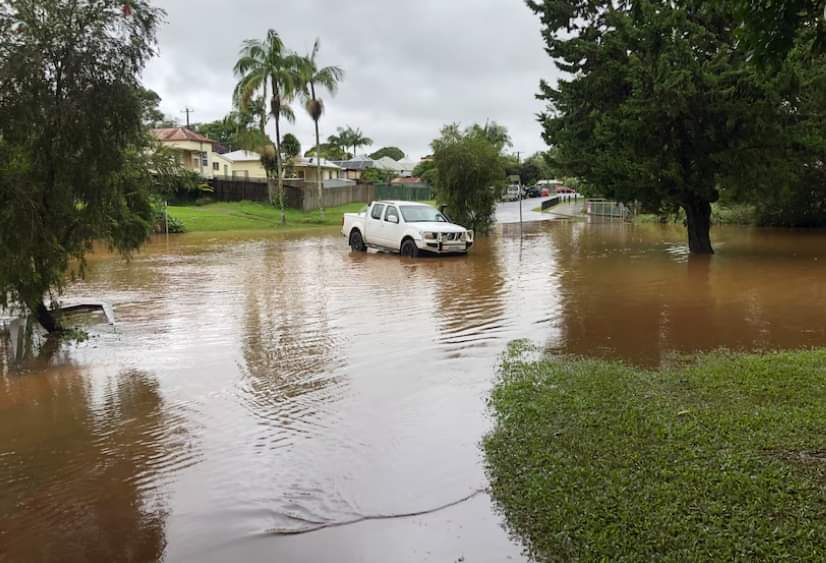The Kenya Meteorological Department (KMD) has issued a significant warning for heavy rainfall across the country, starting from April 2 and expected to last until April 8, 2024. This advisory comes as a crucial alert for residents, authorities, and various sectors that may be impacted by the torrential rains.
With the potential for flooding, landslides, and disruptions to daily life, it is imperative for everyone to be prepared and take necessary precautions.

The forecasted heavy rainfall is attributed to several meteorological factors, including the convergence of moisture-laden air masses over the region, the influence of the Indian Ocean Dipole (IOD), and the presence of a low-pressure system. These combined elements create a conducive environment for intense precipitation, raising concerns about potential hazards and challenges.
One of the primary areas of concern during such heavy rainfall events is the risk of flooding. Low-lying regions, areas near rivers and lakes, as well as urban centers with poor drainage systems, are particularly vulnerable. The excess water runoff can lead to inundation of homes, roads, and agricultural lands, causing displacement and damage to property. Additionally, flash floods can occur suddenly, posing a threat to lives and necessitating swift emergency responses.
In mountainous areas, the heightened rainfall increases the likelihood of landslides. The saturation of soil and destabilization of slopes create conditions ripe for mass movements of earth and rock, endangering communities living in these terrains. Proper monitoring of landslide-prone areas and proactive measures to mitigate risks are essential strategies in ensuring safety and minimizing the impact of natural disasters.
The agricultural sector also faces challenges during prolonged heavy rainfall periods. Excessive moisture can saturate fields, leading to waterlogging and affecting crop health. Farmers may experience difficulties in accessing their farms, conducting necessary agricultural activities, and safeguarding harvested produce. Such disruptions can have economic repercussions, affecting food security and livelihoods.
Transportation and infrastructure are other critical areas that can be severely impacted by heavy rainfall. Roads may become impassable due to flooding or landslides, disrupting travel and logistics networks. Bridges and culverts are at risk of damage from the force of floodwaters, necessitating timely assessments and repairs to ensure continued connectivity.
Furthermore, heavy rainfall events often coincide with increased risks of waterborne diseases and public health concerns. Stagnant water, poor sanitation practices, and overcrowded conditions in temporary shelters can facilitate the spread of illnesses such as cholera, typhoid, and malaria. Health authorities must remain vigilant in surveillance, response efforts, and community awareness campaigns to mitigate health risks.
Local authorities, emergency services, and disaster management agencies play a crucial role in preparedness and response measures during heavy rainfall periods. Preemptive actions such as early warnings, evacuation plans, and the provision of emergency supplies are vital in safeguarding lives and property. Coordination among stakeholders, including community organizations and humanitarian partners, enhances resilience and effective disaster response.
In light of the impending heavy rainfall, individuals and communities are urged to take proactive steps to protect themselves and their assets. Some recommended actions include:
Stay Informed: Monitor weather updates and advisories from official sources such as the Kenya Meteorological Department and local authorities. Be aware of potential risks and evacuation routes in your area.
Prepare Emergency Supplies: Stock up on essential items such as food, water, medications, flashlight, batteries, and first aid kits. Keep important documents and emergency contacts accessible.
Secure Property: Clear gutters, drains, and waterways around your property to prevent water buildup and flooding. Secure loose objects that could be swept away by strong winds.
Plan Evacuation: Identify safe evacuation shelters or locations in case evacuation orders are issued. Have a family emergency plan in place and communicate it with household members.
Stay Safe: Avoid unnecessary travel during heavy rainfall periods, especially in high-risk areas prone to flooding or landslides. Follow official guidance and instructions from authorities.
As the country braces for heavy rainfall from April 2 to 8, 2024, collective efforts in preparedness, resilience, and response are crucial in mitigating potential impacts and ensuring the safety and well-being of all residents. By staying vigilant, informed, and proactive, individuals and communities can navigate through challenging weather conditions with resilience and adaptability.
